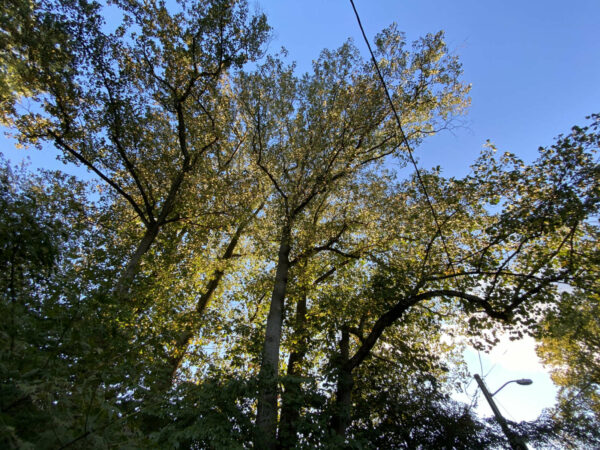
A new program seeks to increase equity in Arlington by planting more trees in certain neighborhoods.
The local non-profit EcoAction Arlington announced that it’s starting the “Tree Canopy Equity Program” with the goal of raising $1.5 million to fund planting at least 2,500 trees over the next five years in local neighborhoods that have too few.
Insufficient tree canopy is closely tied to heat and temperature increases. The reason certain areas of Arlington are hotter than others, like the Rosslyn-Ballston corridor, is due in part to lack of trees, recent data shows.
“The neighborhoods most impacted by insufficient tree cover are communities with higher-than-average minority populations and communities with people living in poverty,” EcoAction Arlington said a press release. “The lack of trees has a real-world impact that can lead to poor physical and mental health outcomes, higher utility costs, and a lower quality of life.”
The ten civic associations and neighborhoods that the program will work with are below.
- Arlington View
- Aurora Highlands
- Buckingham
- Columbia Heights
- Glebewood
- Green Valley
- John M. Langston Citizens Association (Halls Hill/High View Park)
- Long Branch Creek
- Penrose
- Radnor/Fort Myer Heights
The current levels of tree cover in those neighborhoods is between 17% and 33%, according to EcoAction Arlington.
“The goal is to radically increase tree planting in the neighborhoods with the lowest tree cover to align with the average for other Arlington communities of approximately 40 percent,” the press release says.
EcoAction Arlington executive director Elenor Hodges tells ARLnow that that the group has already begun to plant more trees. That includes American hornbeams, pin oaks, river birch, sugarberry, American sycamore, swamp white oak, and American linden.
The program needs about $150,000 a year to cover operations, marketing, staffing, and the actual planting of trees, Hodges says, with each tree costing about $500 to plant.
Amazon, an inaugural sponsor, has already contributed $50,000. The goal is to raise $1.5 million from other corporate and individual donors, while also obtaining funding from Arlington’s existing Tree Canopy Fund Program. This initiative allows neighborhood groups, owners of private property and developments, and places of worship to apply to have native plants or trees planted on their property.
Residents in neighborhoods lacking sufficient tree canopy note that the the problem is often tied to the construction of large, new homes and not prioritizing trees while building.
“As we lose trees due to infill development of large homes on lots in our neighborhood, they need to be replaced and even expanded,” John M. Langston Citizens Association president Wilma Jones tells ARLnow. “We all know that trees give off oxygen and they reduce stormwater runoff.
Natasha Atkins has been a resident of Aurora Highlands for nearly four decades and has “watched with alarm” the number of trees lost to homebuilding projects.
“With the County’s zoning code, requiring only very small setbacks for residential housing, it is questionable whether there will be much of a tree canopy in the future in the single-family neighborhoods that are being redeveloped,” she says. “Trees are an afterthought in planning and zoning. They should really be a driver.”
Hodges concedes that planting 2,500 more trees over the next five years will only “make a dent” and it will take tens of thousands of trees for all these neighborhoods to reach the 40% tree canopy threshold.
But the Tree Canopy Equity Program is just as much about what one can do today as what one can do tomorrow, says Hodges.
“It’s about behavioral change and teaching people about the importance of having a sufficient tree canopy in Arlington,” she said.

